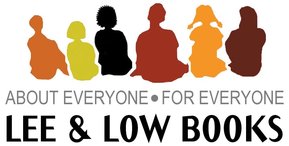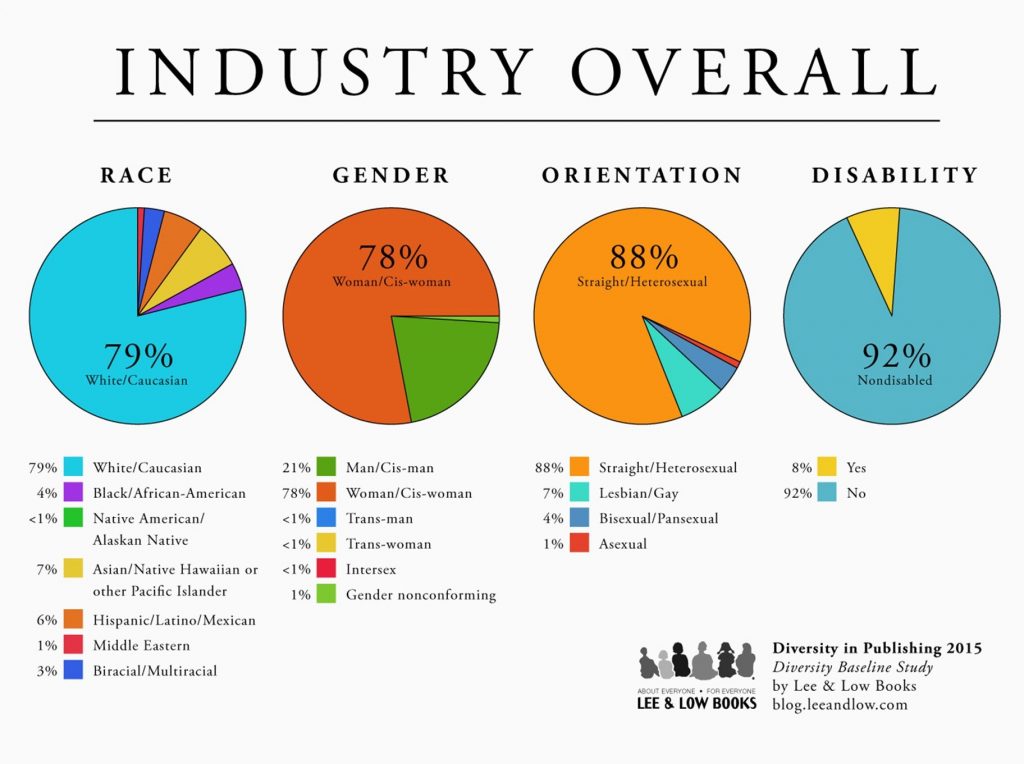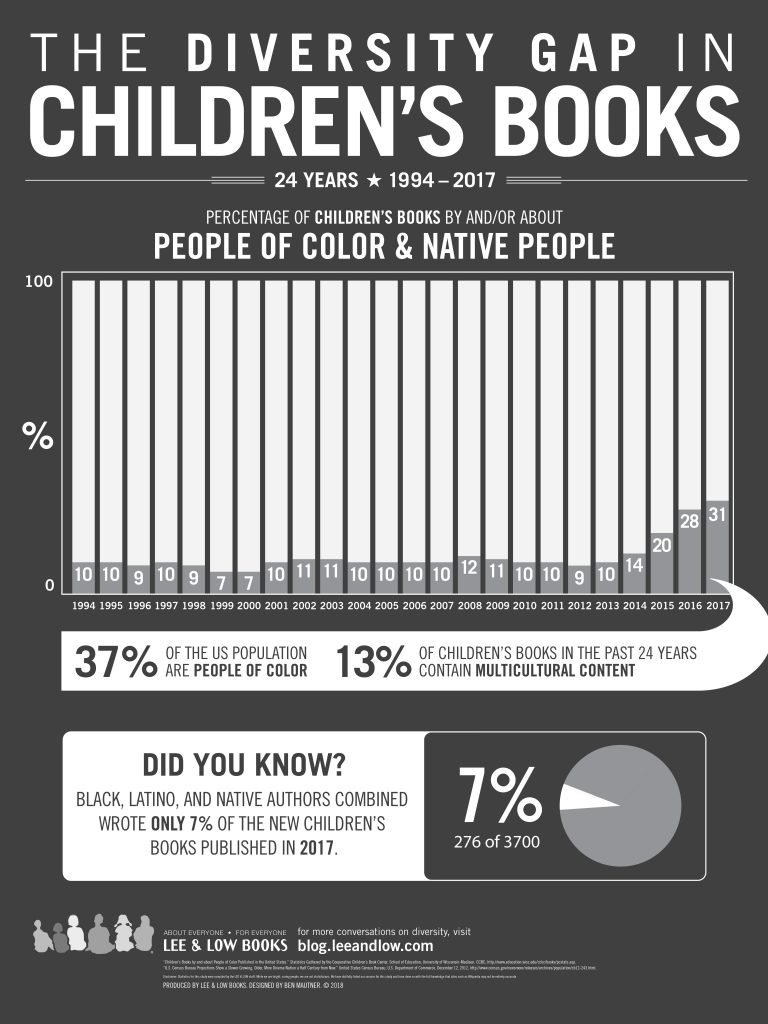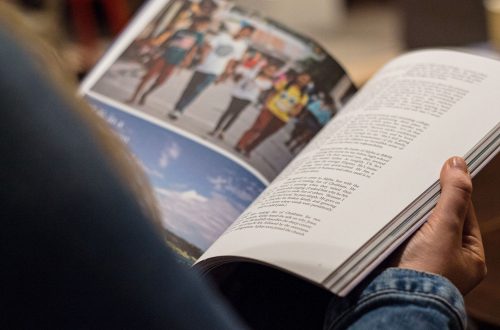
Lee & Low Diversity Baseline Survey
Lee and Low Books, a publishing company dedicated to publishing the stories of diverse people, conducted a baseline survey in 2015 to examine diversity in publishing. Lee & Low Books is a publishing company that seeks to publish the stories of all people. The purpose of their diversity survey was to gather information on the following categories: gender, race/ethnicity, sexual orientation, and (dis)ability. In 2018, Lee & Low posted an update on their diversity in children’s books survey, informing that there was an increase in diverse authors publishing.
 Companies like Lee & Low Books are important to the fight for representation in children’s literature. Their diversity baseline survey not only looked at diversity in books, but also diversity in the people who are employed in the publishing industry. These statistics are important because it helps us to better understand why some stories are left untold. Diversity is not just an issue for people who have been historically marginalized, it is important to discuss injustices with all people, whether they are directly effected by lack of privilege or not. All students can benefit from learning the stories of people of different genders, sexual orientation, race/ethnicity, or (dis)ability in order to better understand the true beauty of diversity and the important of being an individual in our world. Learning about different cultures promotes pride in our cultures while also promoting respect for the things that make us each unique. Here are some key takeaways from the Diversity Survey:
Companies like Lee & Low Books are important to the fight for representation in children’s literature. Their diversity baseline survey not only looked at diversity in books, but also diversity in the people who are employed in the publishing industry. These statistics are important because it helps us to better understand why some stories are left untold. Diversity is not just an issue for people who have been historically marginalized, it is important to discuss injustices with all people, whether they are directly effected by lack of privilege or not. All students can benefit from learning the stories of people of different genders, sexual orientation, race/ethnicity, or (dis)ability in order to better understand the true beauty of diversity and the important of being an individual in our world. Learning about different cultures promotes pride in our cultures while also promoting respect for the things that make us each unique. Here are some key takeaways from the Diversity Survey:
- 79% of individuals employed in the publishing industry are white/Caucasian
- 13% of children’s books published annually in the United States over the last 24 years address diversity
- While 78% of those employed in the publishing industry are women/cis-women, 40% of the executives in the publishing industry are men/cis-men
Children need representation. Misrepresentation and under-representation of marginalized groups does not help students become engaged in reading. In my next blog post in the research section of this blog, I talk about the literacy of adults in the United States. Children who are living in poverty and who struggle to find a connection to literature in their early years are at risk of not developing the literacy skills necessary to improve their quality of life as they grow up. It is our job as advocates and educators to cultivate environments of equal and appropriate representation.

Looking at the information provided from the diversity baseline study, I want to know your thoughts. In the comments section, let’s create a dialogue about our students who are not represented in literature.
- What are some ways that you create a diversity inclusive classroom library?
- What do you do when you come across a book in your library that misrepresents a specific population of people?
- What does the data tell you about the publishing industry? What conclusions can you make?






